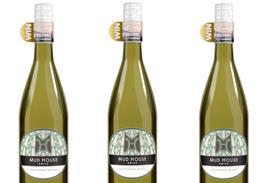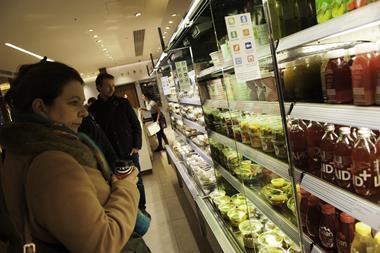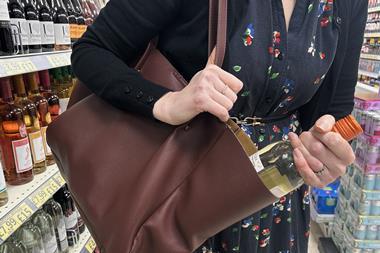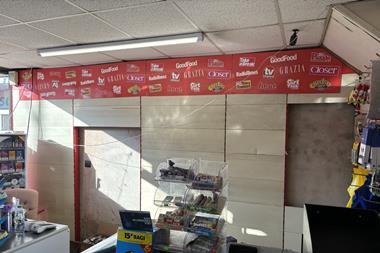The food-to-go market is continually growing and evolving. C-Store reports on the thinking behind the leading brands and emerging trends outlined in a new report and at a recent conference
Food to go is here to stay: in an ever-changing and increasingly unpredictable industry, there are few things that can be said with such conviction. The statistics speak for themselves: the food-to-go (FTG) sector is now worth more than £20bn in the UK and is due to grow by 3.8% in 2017, surpassing both the total food and eating out sectors, according to the MCA Food to Go report 2017. This is being partly driven by an increase in commuter journey times, which now average 28 minutes per journey (45 minutes in London), as well as longer working weeks (average 37.5 hours), said Steve Gotham, MCA director of insight. He was speaking at MCA’s recent FTG conference in London, which showcased best practice from across the sector.
Of course, with growing demand comes growing competition from across the FTG arena. Subway and Costa have led the growth in terms of store numbers, adding 468 and 476 outlets respectively (circa 25% growth) over the past three years, the conference heard. However, the convenience channel has the largest share of food to go (24%), driven by the expansion and improving standards of the multiples - notably Tesco, Sainsbury’s and M&S.
The fastest-growing channel in FTG is branded contemporary fast food, including chains such as Leon and Coco di Mama. The channel increased its share from 0.8% in 2011 to a forecast 1.6% in 2017, and is being fuelled by consumer trends towards convenience, quality and healthier consumption, the report reveals.
MCA executive director Simon Stenning outlined his food-to-go predictions for 2017. “Expect more innovation from the grocery multiples this year and expect more blurring of foodservice and retail,” he told delegates. MCA expects the largest contribution to the FTG market over the next three years to come from c-stores (£615m), followed by coffee shops (£513m) and sandwich & bakery (£336m).
Lessons from the specialists
Amid the emerging trends and evolving market place the traditional fast food sector is going strong, accounting for 7.7% of the market. Nothing encapsulates traditional fast food more than KFC, the long-established global brand that has had to adapt to stay relevant to the market, which it has succeeded in doing - it continues to open about 20 new restaurants a year. Its strategy is one that can be applied to all FTG operators.
Martin Shuker, KFC UK & Europe managing director, said: “The quick-service channel has always been about convenience and affordable, tasty food, while avoiding brand vulnerabilities.” But over the past 10 years there has been increasing expectations on “the ‘good’ that wraps the core”, he added. Concepts of freshness, authenticity, local provenance, natural, wholesome and ‘socially good’ are increasingly demanded by the consumer. “The consumer will react to how you brand build,” he said. “We’re a brand that people don’t just buy, but buy in to.”
Shuker outlined how KFC had focused on nutritional improvements and transparency in recent years, as well as on its ‘socially good’ credentials: since 2015 it has donated more than four tonnes of chicken to charities, via 304 outlets. It has also undertaken a recent in-store refresh, utilising ‘warm, inviting and authentic’ natural materials and using red to highlight key details.
Meanwhile, as part of its strategy to be there for the ‘I want it now generation’, KFC has partnered with delivery companies Deliveroo, Jinn and Just Eat, with 60 restaurants now offering delivery capability. It has also launched a Colonel’s Club rewards-based app, in which consumers can collect chicken stamps to earn free food rewards.
Delivery market
Just Eat managing director Graham Corfield outlined the explosive growth in the take-away market, which is now worth about £10bn to the UK economy - of which the delivery takeaway sector accounts for £5.5bn of the pie (Euromonitor Savills UK casual dining 2016). In fact, over the past five years the Western European market for takeaway and delivery has grown faster than global GDP, and is outgrowing eating in as consumer dining trends shift, he noted.
Consumers now want takeaway any night of the week, not just on a Friday, and they also demand choice, including on the digital high street, in their favourite casual dining brands and from their favourite local. They also want convenience - which nowadays translates to access at the tap of a button 24/7. “It’s vitally important we put our service at any touch point they [consumers] want,” he said.
Health
To illustrate rising demand for healthy FTG, 10 out of 11 leading brands increased their range of green salads between Q1 2013 and Q1 2017. Alternative carbs, including quinoa and buckwheat, have become more popular, too, the MCA report noted.
Fledgling London chain Farmstand claims to have “completely redesigned the approach to fast casual food”. It focuses on health, sustainably-sourced food and provenance. As such, the chain sources only from UK suppliers; 85% of its seasonal menu is vegetarian and just 10% meat; all food and drink is free from refined sugar, gluten and dairy; and each customer is offered a free bottle of still or sparkling water. “We believe there is an opportunity to build a premium, multi-format, fast casual food company that uses sustainably-sourced ingredients and is fairly priced,” said Farmstand founder Steve Novick.
Ivan Schofield, chief executive of Japanese takeaway chain Itsu, agreed there was “a big thing around relevance,” which was defined by health, sustainability and freshness. But he added that the “biggest mistake is when people lose sight of the basics, such as efficiency”.
Marks & Spencer head of convenience trade David Philpott said 87% of the retailer’s customers stated that health and well being was “extremely important” to them. But 50% and 47% respectively said it was hard to eat healthily on the move or in a restaurant or café, thus highlighting the opportunity to capitalise on the health trend.
To illustrate the shifting dietary sands, he said that M&S was selling three times as many Made Without Wheat products than it was 12 months ago.
The convenience sector
In a session on the convenience sector chaired by HIM’s Katie Hemmings, Spar head of marketing Phillipe Rondpierre said convenience stores needed to emulate the quality of food, environment and speed of service characterised by the food-to-go specialists highlighted at the conference. Spar’s Daily Deli concept had been created to deliver consistency and quality across its independent estate, he added.
“We believe in ‘foodvenience’. People are looking for space, peace and quiet and a bit of warmth and we think c-stores are ideally positioned for that. We’re already at the heart of communities.”
Scott Graham, owner of McLeish in Inverurie, Aberdeenshire, and Convenience Retailer of the Year 2016, said there was a limit to how much people wanted to pay for food to go. “We sell most of our meals at £3.99,” he said. Coffee played a big part, too, with 15% of his customers buying a hot drink. “Customers’ expectations now are that convenience stores will provide quality food to go,” he added.
Rondpierre highlighted Manchester Spar retailer Paul Stone’s partnership with Deliveroo, and urged other c-stores to work with delivery partners. “It’s cost Paul nothing and he gets to reach new customers and is adding to his offer. It’s a no brainer.”
Sandwiches going strong - for now
The sandwich market has slowed from explosive growth in recent decades, when it surged in value from about £1bn in 1990 to £8bn in 2015. However, while is now showing consistent growth of about 2% per annum, the market faces potential Brexit-related challenges ahead, according to Jim Winship, director of the British Sandwich and Food to Go association.
“The big issue regarding Brexit is immigration and the impact on factory staff - in London in particular it is difficult to find people,” he said. “The sandwich industry is very labour intensive - one of the issues is whether you can use automation to overcome these issues. The future will cause us all to rethink and change. People will expect our business to change how we operate.”
MARKET TRENDS
- There were about five billion food to go (FTG) occasions in 2016, accounting for 43% of total out-of-home visits - up from 40% in 2015
- 61% of snacks, and 31% of meals, were bought to go in 2016
- FTG is most often bought as a snack, accounting for 56% of all occasions
- Tesco is the market leader in FTG, with a 6.5% share of sales, followed by McDonald’s (3.8%), Subway (3.7%), Sainsbury’s (3.6%) and M&S (3.2%)
- The total count of FTG products at surveyed leading brands, including sandwiches, wraps and green and carbohydrate salads, increased by 17% between Q1 2013 and Q1 2017.
Source: MCA Food to Go report 2017



























No comments yet